![A transport of Jewish prisoners marches through the snow from the Bauschovitz train station to Theresienstadt. [LCID: 69720]](https://encyclopedia.ushmm.org/images/large/781755a6-1ba5-4d8e-8b2b-9f25bdf3687f.jpg)
Browse an alphabetical list of curated media essays that explore various topics pertaining to the Holocaust and World War II. These essays give a brief overview of the topic and provide related media, including photographs, maps, oral histories, and films.
<< Previous | Displaying results 1-50 of 780 for "Media Essay" | Next >>
The 1936 Olympics in Berlin were the first to employ the torch relay, an Olympic ritual. The Nazi regime used the Olympics to present the false image of a peaceful Germany.
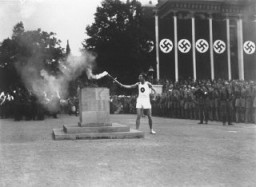
The 82nd Airborne Division is recognized as one of the 36 liberating units of the US Army during World War II. On May 2, 1945, troops of the 82nd Airborne and the 8th Infantry Division overran Wöbbelin, a subcamp of t...
The 9th Armored Division is recognized as one of the 36 liberating units of the US Army during World War II. On May 8, 1945, troops of the 9th and 1st Infantry Divisions liberated two subcamps of the Flossenbürg conce...
Born to a Jewish family in Poland, Aaron Lejzerowicz was endangered by the German invasions of Poland and the USSR. These maps offer a small glimpse of German military activity over the course of World War II—events w...
During World War II, African American and white soldiers who were bonded on the battlefie...
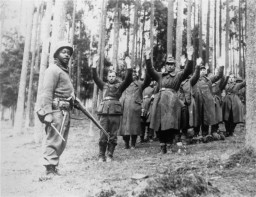
The end of World War II brought new challenges for Jews who survived the Holocaust. In these oral histories, survivors describe personal experiences after the war.
Born to a Jewish family in Preveza, Albert Gani was endangered by the German occupation of Greece. In March 1944, the Nazis deported the Jews of Preveza to Auschwitz. Albert was killed several months later, at the age...
Alfred Rosenberg was one of the most influential Nazi ideologues. He held several positions in the Nazi Party over the course of his career. During World War II, Rosenberg played key roles in the looting of art and the implementation of the “Final S...
The Nazi regime issued more than 400 anti-Jewish decrees in its first six years of power. These policies gradually stripped Jews of their rights, livelihoods, and property. Altogether, the decrees functioned to sepa...
The word antisemitism means prejudice against or hatred of Jews. The Holoca...
The word antisemitism means prejudice against or hatred of Jews. The Holocaust is history’s most extreme example of antisemitism.
The word antisemitism means prejudice against or hatred of Jews. The Holocaust is history’s most extreme example of antisemitism.The Nazi Party spread antisemitic propag...
The word antisemitism means prejudice against or hatred of Jews. The Holocaust is history’s most extreme example of antisemitism.These artifacts reflect some of the anti-Jewish policies that permeated daily life in the period of the Holocau...
The word antisemitism means prejudice against or hatred of Jews. The Holocaust is history’s most extreme example of antisemitism.
The word antisemitism means prejudice against or hatred of Jews. The Holocaust is history’s most extreme example of antisemitism. In these oral histories, survivors......
The word antisemitism means prejudice against or hatred of Jews. The Holocaust is history’s most extreme example of antisemitism.The Nazi Party spread antisemitic propag...
In designing the United States Holocaust Memorial Museum, the late architect James Ingo Freed,...
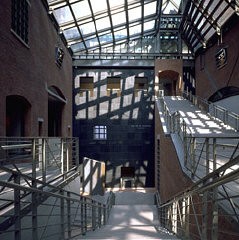
Despite great risks and challenges, many Jews attempted armed resistance across German-occupied Europe. Jews engaged in resistance at both the individual and group levels. Among their efforts were uprisings in killing centers and ghettos.
Despite great risks and challenges, many Jews attempted armed resistance across German-occupied Europe. Jews engaged in resistance at both the individual and group levels. Among their efforts were uprisings in killing centers and ghettos.
With the end of World War II and collapse of the Nazi regime, survivors of the Holocaust faced...
In 1942, Aron Derman and Lisa Nussbaum escaped deportation from the Grodno ghetto with the help of Tadek Soroka, a non-Jewish Pole. Aron and Lisa—aged 19 and 15—joined the armed Jewish resistance. As partisans, they f...
The Nazis established killing centers for efficient mass murder. Unlike concentration camps, w...
The Auschwitz concentration camp complex was the largest of its kind established by the Nazi r...
The Auschwitz concentration camp complex was the largest of its kind established by the Nazi regime. It included three main camps. All three camps used prisoners for forced labor. One of them also functioned for an extended period as a killing cente...
The Auschwiz camp complex was the largest of its kind established by the Nazi regime. Auschwitz consisted of three main camps, including a killing center. Individuals not sent directly to the gas chambers were sentenced to forced labor. More...
The Auschwiz camp complex was the largest of its kind established by the Nazi regime. Auschwitz consisted of three main camps, including a killing center. Individuals not sent directly to the gas chambers were sente...

The Auschwiz camp complex was the largest of its kind established by the Nazi regime. Auschwitz consisted of three main camps, including a killing center. More than 1.1 million people were murdered at Auschwitz. Individuals not sent directly to th...
The largest of its kind, the Auschwitz camp complex was essential to implementing the Nazi plan for the “Final Solution.” Learn about survivors’ experiences there in the following oral histories.
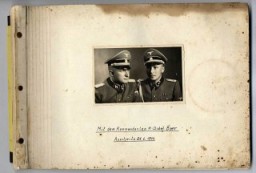
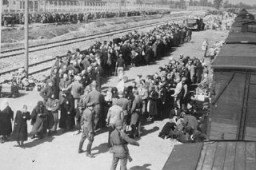
We would like to thank Crown Family Philanthropies, Abe and Ida Cooper Foundation, the Claims Conference, EVZ, and BMF for supporting the ongoing work to create content and resources for the Holocaust Encyclopedia. View the list of donor acknowledgement.